Sacrifice for the Deal: Culinary Challenges in German Business Lunches and Dinners
In Germany, business isn’t just conducted in the boardroom. A significant amount of relationship-building happens over food, whether it’s lunch at a local restaurant or dinner at a traditional Gasthaus. Germans love to discuss deals after sharing a meal, and while the experience can be enjoyable, you might also encounter some unexpected culinary challenges.
If you’re new to German cuisine, some dishes might seem strange or downright bizarre, but don’t worry—that’s part of the charm! In this blog, we’ll explore some of the weirdest foods you may come across during a business lunch or dinner in Germany. And who knows? You might just find yourself embracing these culinary curiosities as part of your journey into German business culture.
1. Sauerbraten – A Sweet and Sour Surprise
Let’s start with Sauerbraten, one of Germany’s most famous dishes. Traditionally made from marinated beef or sometimes pork, this roast is soaked in a mixture of vinegar, water, and various spices for several days before being slow-cooked. The result is a tender, sweet-and-sour dish served with gravy, red cabbage, and often potato dumplings.
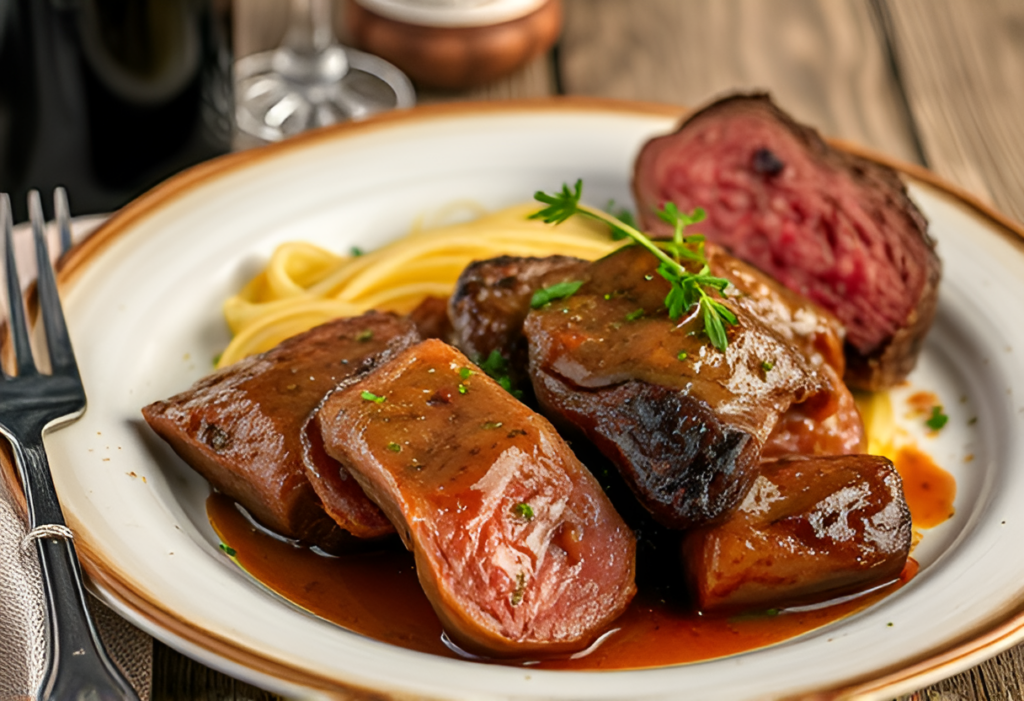
For those unfamiliar with the concept of marinated meat, Sauerbraten’s tangy flavor can be a shock. But in German business culture, this dish is a symbol of tradition, patience, and care—qualities often valued in business relationships. So, when you’re invited to a lunch featuring Sauerbraten, consider it an opportunity to discuss long-term partnership prospects.
2. Mettbrötchen – Raw Pork on a Roll
If you find yourself at a breakfast meeting or a quick lunch with German colleagues, you might be surprised to see people happily biting into Mettbrötchen—a bread roll topped with raw minced pork, onions, and a sprinkle of salt and pepper.
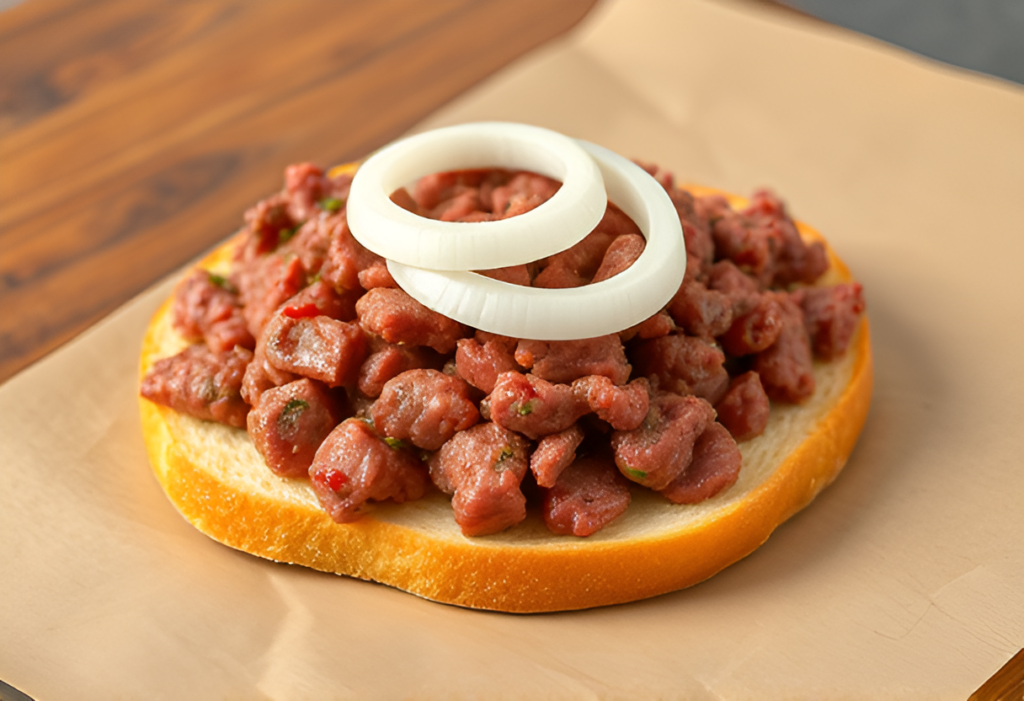
Raw pork might sound unusual, but Mettbrötchen is a beloved snack in many regions of Germany. It’s a dish that could raise eyebrows for the uninitiated, but locals enjoy it as part of their daily diet.
And if your hosts love Mettbrötchen, you can be sure they appreciate efficiency and directness in business, as this dish is a no-frills, straightforward option.
3. Handkäse mit Musik – Cheese with Music?
It’s not exactly what it sounds like. Handkäse mit Musik is a quirky dish from the Hesse region, made from sour milk cheese served with raw onions and vinegar. The “music” in the name refers to the sound (or more accurately, the effect) of the onions as they digest—a cheeky reference to flatulence.
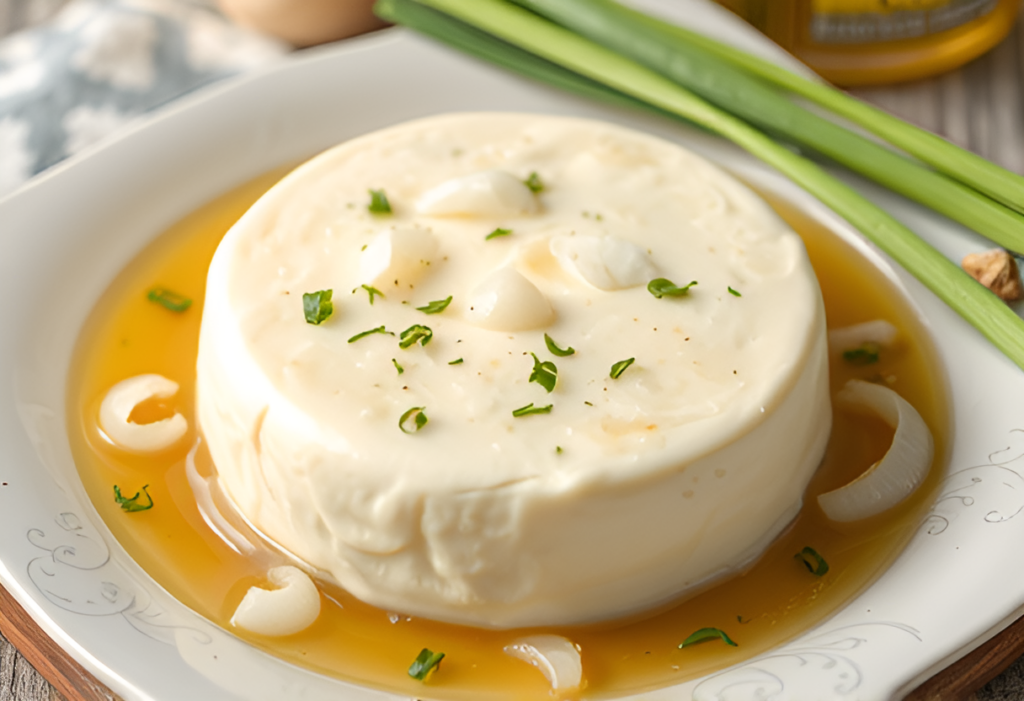
The cheese itself has a strong, pungent aroma, which can be off-putting to some. But in Germany, it’s a perfect accompaniment to a cold beer and a lively discussion. If your business partners order this during a casual dinner, it’s a sign that they value openness and a relaxed atmosphere—perfect for less formal business talks.
4. Leberkäse – It’s Not Liver Cheese
Despite its name, Leberkäse contains neither liver nor cheese. This Bavarian delicacy is a type of meatloaf made from finely ground pork, bacon, and beef, then baked until it forms a crunchy crust. It’s typically served in thick slices with mustard and a side of pretzels or bread rolls.
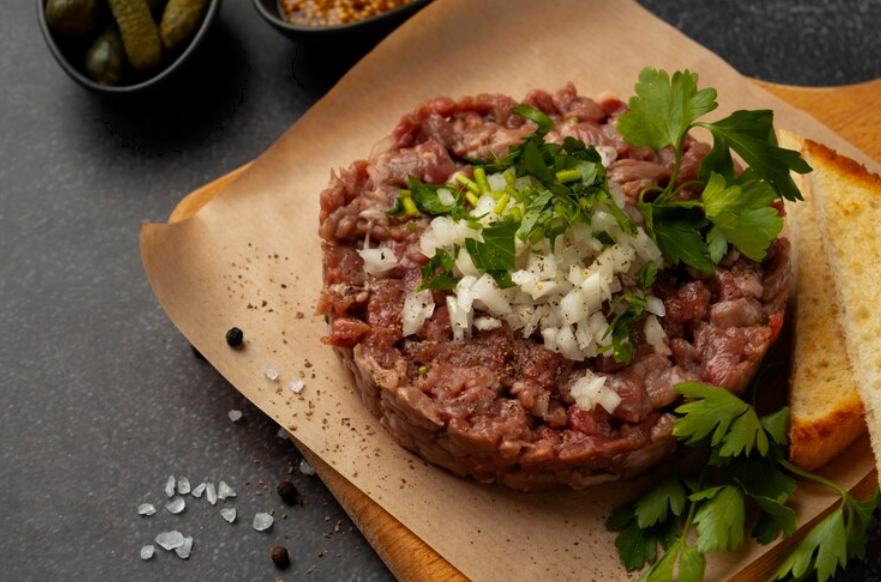
Leberkäse might remind you of a hybrid between bologna and meatloaf, but it’s often enjoyed as a hearty meal at lunch. It’s a popular dish for business lunches because it’s simple, filling, and easy to share. For German colleagues, offering Leberkäse during a meeting is an invitation to a no-nonsense, direct conversation—just like the dish itself.
5. Blutwurst – Blood Sausage
If you’re attending a traditional German meal, especially in regions like Bavaria or Rhineland, you may encounter Blutwurst, or blood sausage. This sausage is made with pork blood, fat, and various seasonings, then cooked and served either hot or cold. It’s often paired with potatoes and sauerkraut.
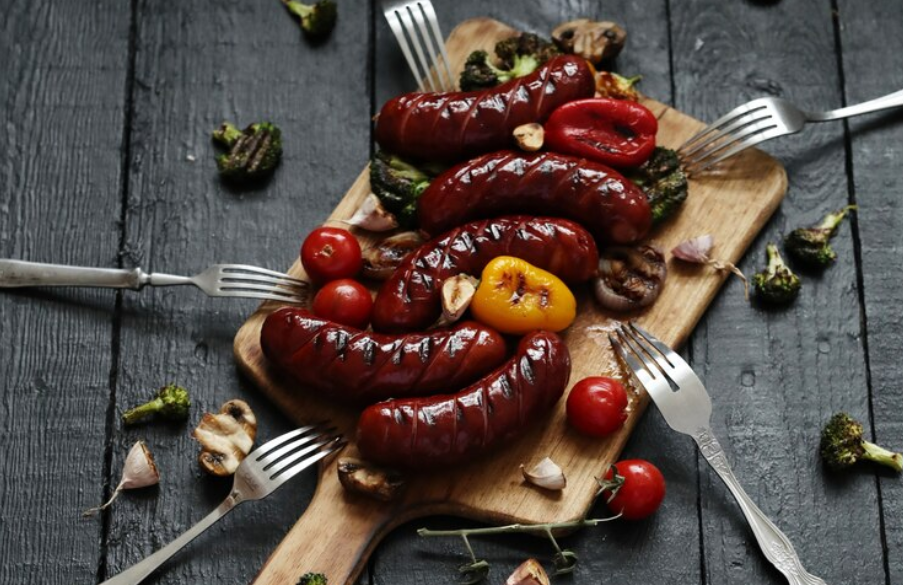
Blutwurst may not be for everyone, but it’s a centuries-old tradition in German cuisine, often served during festive occasions. In business settings, ordering Blutwurst can be a way of showing your willingness to embrace local customs and traditions, signaling respect for the culture. It’s also a perfect icebreaker for discussing bold, innovative business ideas, as both Blutwurst and risk-taking are acquired tastes.
6. Saumagen – Pig’s Stomach, Anyone?
Another German delicacy with a bit of shock value is Saumagen, which translates to “sow’s stomach.” This dish, originating from the Palatinate region, is a mix of pork, potatoes, and spices, all stuffed into a pig’s stomach and then boiled.
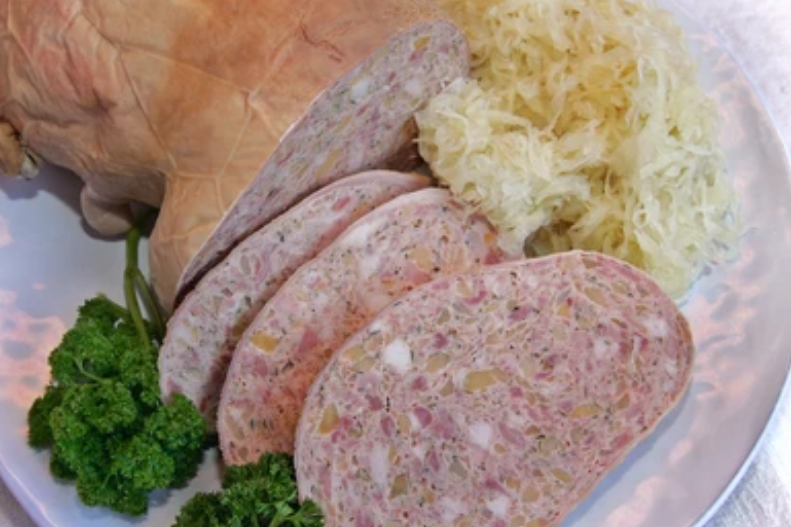
Former German Chancellor Helmut Kohl was famously fond of Saumagen, often serving it to foreign dignitaries. For those brave enough to try it, Saumagen can be surprisingly delicious. In a business setting, trying something as adventurous as this can be a metaphor for venturing into unknown markets—it’s risky, but the rewards could be great.
7. Eisbein – Boiled Pork Knuckle
The name might suggest ice, but Eisbein is a hearty dish of boiled pork knuckle, usually served with sauerkraut and potatoes. The meat is tender and falls off the bone, while the skin remains crisp and salty.
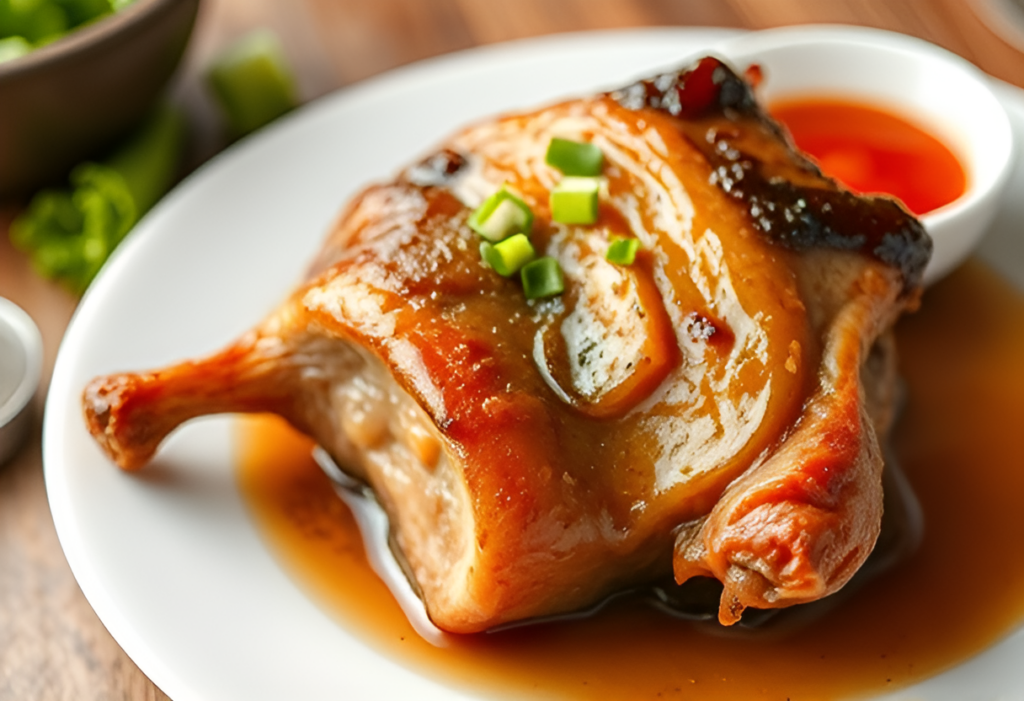
This dish might seem heavy for a business lunch, but it’s a beloved traditional meal in many parts of Germany. Sharing a plate of Eisbein shows you’re willing to embrace the strength and resilience that Germans admire in both food and business. Plus, it’s a great conversation starter for discussing long-term partnerships—like the slow-cooked knuckle, success takes time.
8. Schweinshaxe – Roast Pork Knuckle
If boiled pork knuckle isn’t your thing, perhaps Schweinshaxe, the roasted version, will be more appealing. This dish features a crispy, roasted pork knuckle, often served with a side of potato dumplings and gravy. The crispy crackling and tender meat make it a favorite at traditional Bavarian restaurants.
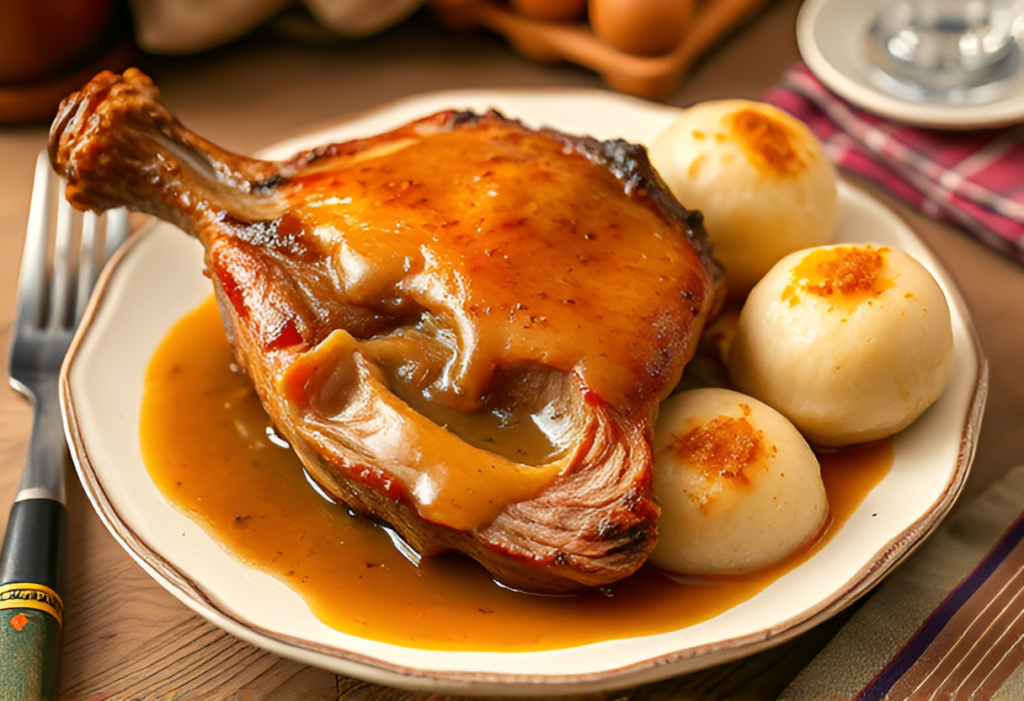
For Germans, Schweinshaxe represents hard work and dedication, as it’s a dish that takes time to prepare. It’s the perfect meal for a business dinner where you’re discussing long-term investments and strategies.
Embrace the Experience – Weird Food, Great Conversations
In Germany, food is more than just sustenance—it’s a way of building relationships, especially in business. By embracing the local cuisine, no matter how strange it may seem at first, you’re showing your German colleagues that you respect their culture and are open to adventurous, new experiences.
At Wingmen, we can’t cook up a meal for you (the only thing we’re capable of boiling is hot water!), but we’re experts in driving sales, particularly SaaS and software sales.
When it comes to closing deals and navigating the business landscape, we know exactly what ingredients are needed to make your business succeed.
So, while you tackle the culinary challenges at your next German business dinner, let Wingmen handle the rest—bringing you the perfect recipe for sales success.
